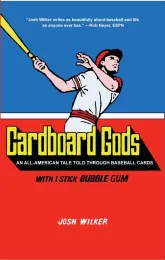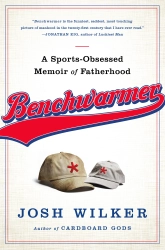Jim Dwyer spent most of the 1970s bouncing around the National League, never really getting the hang of things in any one place before being swapped for Larry Lintz or shipped across the border with Pepe Mangual or, in his most pornographic-sounding transaction, clustered into a three-way featuring Peter LaCock. By 1978, when this card came out, Jim Dwyer would have been a very unlikely candidate for lasting 18 seasons in the major leagues. If you go on the evidence provided by this card, he was dangerously close to disappearing altogether. Since entering the league in 1973, he had produced just one passable season, and that was in very limited action (a .279 average in 86 at-bats in 1974), and other than that had as many seasons below the Mendoza Line as above it. His existence in cardboard form at this stage was, in fact, bordering on the inexplicable. He was not a slick-fielding infielder or a squat, cannon-armed backup catcher, the two most likely species of position players to persist in the majors despite being unable to hit. Dwyer logged innings in centerfield, but he was basically a corner outfielder, a would-be left-handed hitting specialist, at least until the inevitable moment when someone connected with whatever team he was on noticed his anemic batting stats and wondered why this guy was on the payroll. At that point, Dwyer was then swapped or, as in the case of the late-season transaction that led to this hasty, nausea-inducing job of card-doctoring, simply released.
And isn’t this everyone’s fear? That one day someone will tap you on the shoulder, you will turn, and the question you’ve long been dreading will be asked of you. So, uh, why are you here? And that the stammering answer to this question will be followed by your release?
But Jim Dwyer seems unmarked by any such dread in his 1978 card. Let the world go through its changes, morphing from one thing to the next. What can you do but smile beneath your droopy caterpillar of a mustache and keep swinging?
Also, Jim Dwyer must have believed that, contrary to the evidence on his baseball card, he had what it took to stick in the majors. His itinerant journey through the 1970s had taken him to several minor league towns, too, and in those towns he had been The Man (career minor league average: .334).
But I wonder if his smile finally started to falter in 1978. Halfway through that season, while struggling once again (his batting average at .215), his litany of transactions hit a new low as he became, for the first time, The Player to be Named Later. Thusly completing an earlier deal for someone named Frank Ricelli (who by then had already been dumped by the Cardinals for the immortal Bob Coluccio), Dwyer joined the Giants for their improbable 1978 pennant drive and “hit” .225 as they faded from contention.
By that point I had not paid a moment of attention to Jim Dwyer, except for possibly being briefly hypnotized by the blobs of colors that comprised the cap in this 1978 card. I wasn’t even aware that the Giants were in a pennant race that season, focusing instead on the dire collapse of my own team, the Red Sox, who died at the hands of the Yankees in a one-game playoff at year’s end for many, many reasons, including the absence of both God and Bernie Carbo. Late in the game, when someone needed to come off the bench and get a hit off of Goose Gossage, the best the Red Sox had to offer was a corroded right-handed-hitting statue named Bob Bailey. Nothing against Bob Bailey, who definitely had some fine moments in a long career, but at that place and time he was never going to get a hit off of Goose Gossage. No, what the Red Sox needed at that moment was Bernie Carbo, left-handed hitting specialist and undying hero of just such a moment three years earlier, when his three-run homer had revived the cemetery-bound Red Sox in the 8th inning of Game Six of the 1975 World Series; unfortunately, Carbo had been sold midway through the season by the geniuses running the team. (In case you’re wondering, Goose fanned Bob Bailey on three pitches, ending the latter’s career.)
Perhaps reacting to this need for a left-handed hitting replacement for Bernie Carbo, the Red Sox purchased Jim Dwyer for the 1979 season. His arrival and two-year stay with the team could not stem a descent into relative irrelevancy by the franchise. That descent coincided for me with the first notes of that disorienting atonal symphony, puberty, and I associate my entry into the world of frustration and loneliness with Red Sox teams that carried an autumnal aura of trauma and doom. They were haunted. But despite that, or maybe because of it, I formed an attachment to Jim Dwyer. He was new to the team and so had not been a part of the failures I wanted to think as little about as possible, and also he was, suddenly, a pretty good hitter.
Back then I loved studying the Red Sox stats in the Sunday Boston Globe. Jim Dwyer’s name was always somehow comforting to me in that context. He wasn’t ever right at the top of the list of names that were ranked according to batting average, but he was always far from the bottom. He hit .265 in 1979 and .285 in 1980. I don’t know why, but I loved that latter mark. It wasn’t volatile and rare like, say, .337, and it wasn’t a stinker like .229. It was right there in the B+ range. Solid. If .285 was a person it would be someone you could rely on to come over and help you move a couch. Though I didn’t think it through to this extent at the time, this kind of unassuming .285 steadiness was just what I needed as I turned 12 and started noticing how distant I was from that which I desired. Without even really realizing I was doing it, I leaned on Jim Dwyer.
And then he was gone, off to Baltimore. But everyone else was gone, too. Fisk, Lynn, Hobson, Burleson. I’m sure it was several weeks into the 1981 season before I even noticed that the stinging mist of absence hovering over the team included the lack of my old reliable .285-hitting pal Jim Dwyer, and then before I could form any thoughts about this development the lengthy 1981 strike occurred, and puberty really took over, and baseball suddenly didn’t seem to mean as much.
As it turned out, Dwyer’s two seasons with Boston proved to be a turning point not just for me but for Jim Dwyer, too, the moment he changed from subpar 1970s National League wanderer to capable 1980s American League left-handed hitting specialist. From the Red Sox he went to the platoon-crazy Baltimore Orioles, peaking with a Lowensteinian effort (.286/.382/.505 in 229 at-bats) for the 1983 champions. He posted his career high in homers (15) four years later, at the age of 37, and avoided his final release all the way until 1990.
***
(Love versus Hate update: Jim Dwyer’s back-of-the-card “Play Ball” result has been added to the ongoing contest.)







You must be logged in to post a comment.